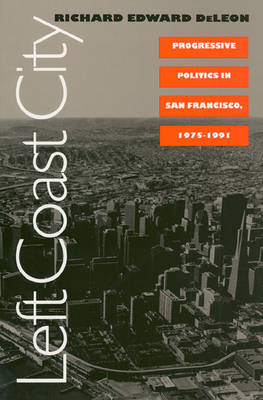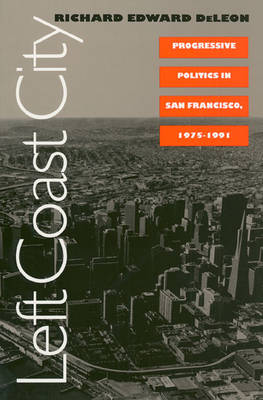
- Retrait gratuit dans votre magasin Club
- 7.000.000 titres dans notre catalogue
- Payer en toute sécurité
- Toujours un magasin près de chez vous
- Retrait gratuit dans votre magasin Club
- 7.000.000 titres dans notre catalogue
- Payer en toute sécurité
- Toujours un magasin près de chez vous
34,95 €
+ 69 points
Description
When Art Agnos campaigned for mayor of San Francisco in 1987, he articulated and defended the "left" isms--liberalism, environmentalism, and populism. He won. Seeing Agnos as a defender of slowgrowth vs. progrowth, the city's progressives had high hopes. But to their disappointment, in the wake of the passage of Proposition M--the most restrictive growth control legislation of any large U.S. city--Agnos supported waterfront development and proposals to build a new baseball stadium in China Basin and a large residential and business development in Mission Bay. In 1991 Agnos ran for reelection. He lost. Left Coast City provides insight into how San Francisco's progressive coalition developed between 1975 and 1991, what stresses emerged to cause splintering within the coalition, and how the coalition fell apart in the 1991 mayoral campaign. Focusing on San Francisco's turbulent political history, non-conformist traditions, and ethnic and cultural diversity, political scientist Richard DeLeon analyzes the successes and failures of the progressive movement as it topples the business-dominated progrowth regime, imposes stringent controls on growth and development, and achieves political control of city hall. Although the movement has achieved national recognition as a possible vanguard of social and political change in this country, DeLeon argues that a new progressive regime has not yet emerged to replace the defunct progrowth regime. Having helped to create chaos out of order, progressive leaders now face the task of creating order out of chaos. "What the city has now is, at best, an antiregime, a transitional political order set up defensively to block the Lazarus-like re-emergence of the old progrowth regime," DeLeon writes. "Such an order cannot last." The key to survival of the progressive movement, he contends, is creation of a progressive urban regime, where public and private entities function together.
Spécifications
Parties prenantes
- Auteur(s) :
- Editeur:
Contenu
- Nombre de pages :
- 256
- Langue:
- Anglais
- Collection :
Caractéristiques
- EAN:
- 9780700605552
- Date de parution :
- 23-09-92
- Format:
- Livre broché
- Format numérique:
- Trade paperback (VS)
- Dimensions :
- 153 mm x 230 mm
- Poids :
- 385 g







